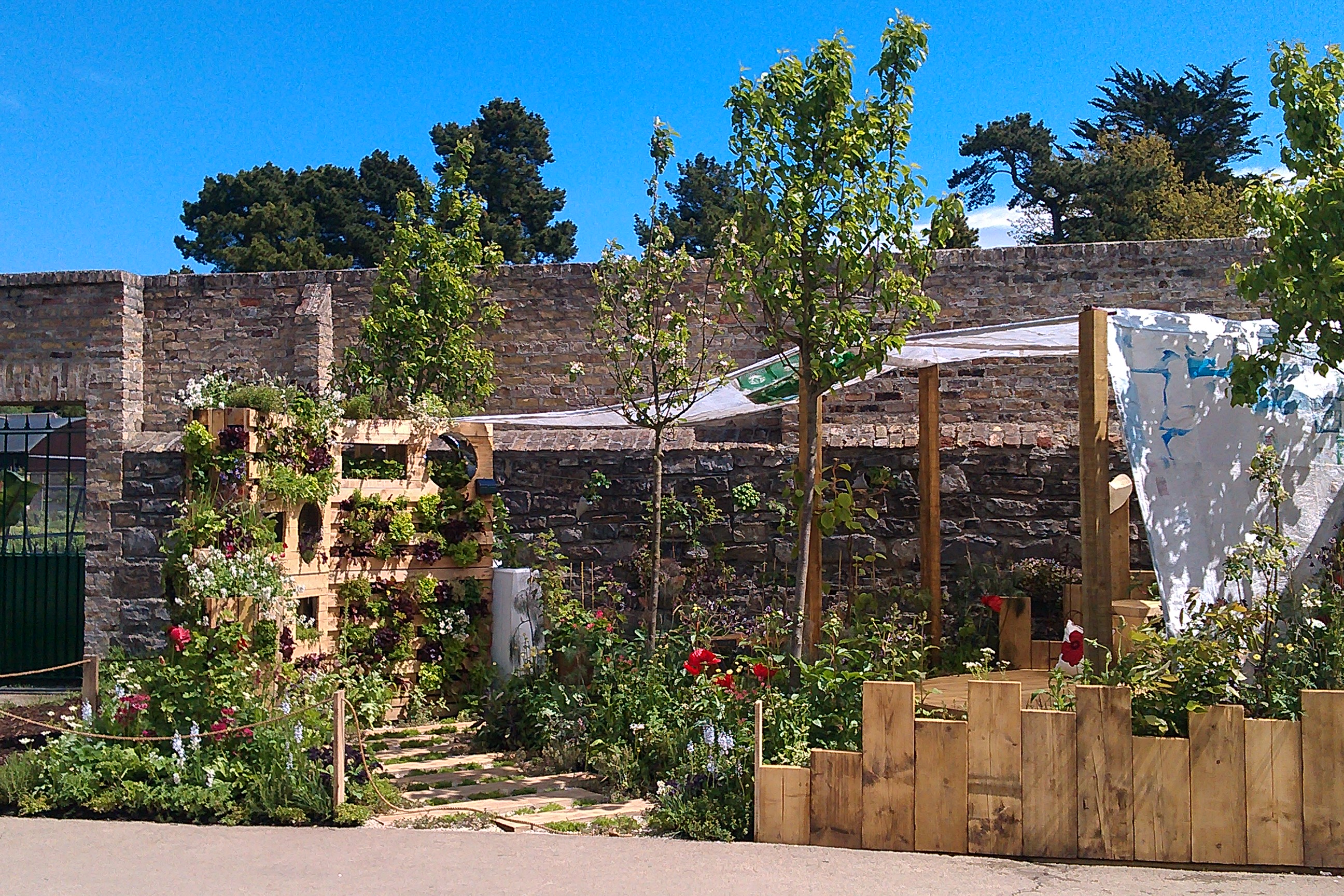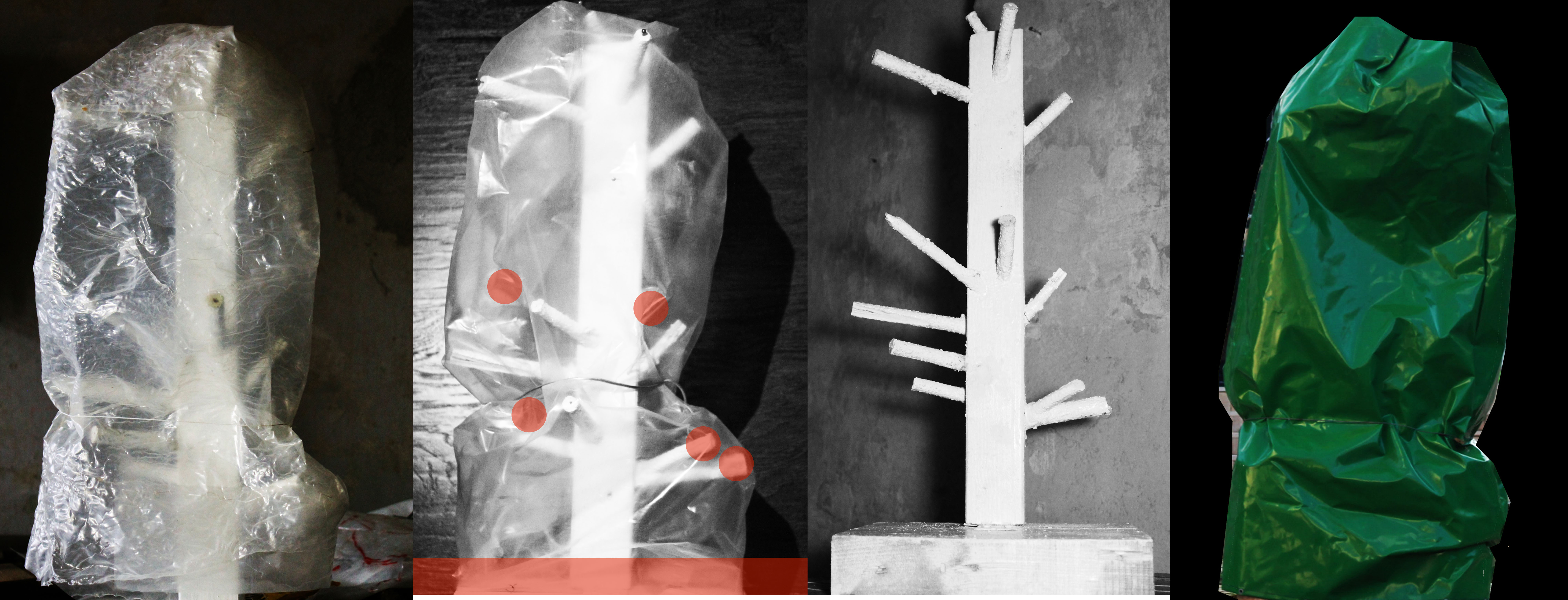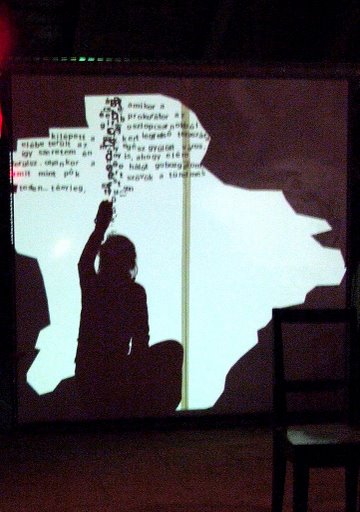Interaktív installáció, Igor Metropol Stúdió, Budapest, 2022 december – 2023 január
Munkabemutató / open studio: január 18.
(scroll down for English)














A munkabemutatón Szabó Eszter Ágnes képzőművésszel beszélgettünk a lomizás/bolhapiacok képző-, és médiamüvészeti vonatkozásairól.
Magyarország a szemét ökonómiájának tekintetében (is) két véglet között található, ahol a global north/west és a global south/east stratégiái képviselik a két végletet. A két véglet összefügg a hulladék-kolonializmus1 és az környezeti rasszizmus2 kapcsolatrendszerében. A ‘Globális Észak’3 rendszerszerű, tudatos megfontolással fektet a hosszú távú jövőbe a fenntarthatóság irányába a jelenben. Népszerű a fenntarthatóság gondolata, sőt, az információs társadalom identitásformáló reklámstratégiájává válik. A ‘Globális Dél‘ ezzel ellentétben nem engedheti meg magának, hogy előre tervezzen hosszú távú célokat, hanem a jelenre irányulóan próbál problémákat megoldani, például a rendelkezésre álló hulladékot alapanyagként használni, jobb minőségű alapanyagok hiányában. A jelen problémáira vonatkozó kreativ megoldások nem artikulálnak fogyasztói identitást, inkább funkcionálisak, és általában helyileg adott anyagokat és tudást használnak fel, nagyfokú kreativitás és munkaerő befektetésével. A két ‘stratégia’ között mozognak az utóbbi országból olcsón, katasztrofális ökológiai és társadalmi következményekkel kitermelt alapanyagok, valamint az oda a tehetősebb országokból visszaszállított hulladék. Mindkettőből a látszólag tudatosan fenntarthatóságra törekvő globális észak/nyugat profitál egyoldalúan és közvetlenül rá nehezedő következmények nélkül. Mintha nem is létezne, amit nem látnak, hasonlóan ahhoz, amikor kisgyerekek befogják a saját szemüket, és azt hiszik, hogy ha ők sem látnak téged, te se látod őket.
Magyarország ezeket a végleteket egymás mellett, országon belül is működteti a lomi kultúráján keresztül. Hagyománya van a háztáji rasszizmusnak. Amióta lomtalanítás létezik, mélyszegénységben élő, főként cigány családok megélhetésének forrását szolgálja a szemét szétválogatása, szállítása és kategóriák szerinti eladása. Ez a mintázat hasonló ahhoz, amikor magas GDP-jű országok alacsony GDP-jű országok területén rakják le rendszeresen soktonnányi veszélyes hulladékukat, általában féllegális szürkezónás módszerekkel. Az áldozat országok leszegényebbjei pedig eltűrik, szelektálják, elégetik a szemetet, és eladják belőle a kiválogatott nemesfémeket. Ahogy a lomisok is.
A munkámmal egyrészt azt szeretném érzékeltetni, hogy a lomi mintázata mennyire hasonló ahhoz a globális szemét-katasztrófához, amire a világ csak az elmúlt pár évben kezd felfigyelni, pedig évtizedek óta zajlik. Másrészt azt is szeretném megmutatni, hogy mennyire más is egyúttal. Nem csak volumenében, hanem módszertanában is, annak ellenére, hogy az újrahasznosításra kerülő alapanyagok között nagy az átfedés. A réz, az alumínium, acél, ólom, és a nyomtatott áramkörökből kiforrasztott mikrocsipekből kinyerhető minimális arany-ezüst a legértékesebbek; a hulladék fát el lehet tüzelni; a használható tárgyakat és gépeket el lehet adni vagy saját használatra be lehet őket üzemelni.
Anna Lövenhaupt-Tsing ‘The Mushroom at the End of the World, On the Possibility of Life in Capitalist Ruins’4 című könyvében innovatív antropológiai kutatásmódszertant alkalmaz. Esettanulmányainak hálózatában ‘precarious survival’ mintázatokkal foglalkozik, amelyek az észak-amerikai Oregon erdeiben szabadon növő matsutake gomba szedőinek gyakorlatát jellemzik. Ahogy a matsutake szedők, a lomisok is egy informális ökonómiát működtetnek, íratlan, de nagyon is valóságos szabályokkal. Olyan értékmentő, vagy értékteremtő munkafolyamatok ezek, amik a szó kapitalista értelmében nem igazán tekinthetők munkának akkor sem, ha a résztvevők megélhetését jelentik. A lomisok munkája és tudása, akárcsak a matsutake gyűjtők munkája és tudása, tapasztalata többnyire láthatatlan, és maguk sem munkának és tudásnak, vagy szakmának definiálják azt. Mindkét gyűjtőgetés „közterületen” zajlik, mégis privát bevételt teremt a megtalálásba, szelektálásba, szállításba, eladásba fektetett erőfeszítés által. Mindkét esetben „vad”, kontrollálatlan körülmények között kerül gyűjtésre az a matéria, ami később értékké válik, az egyik erdei, a másik városi területen. Ezért mindkét helyzetben aránylag kiszámíthatatlan, hogy mennyi befektetett munka mennyi értéket fog termelni.
Tsing megfigyelése, hogy ezek miatt a szempontok miatt a matsutake gyűjtés nem illetszhető a kapitalizmus és az antropológia ismert tervezési és elemzési kategóriáiba, nem írható le jól körülhatárolt módon. Sokkal egyenetlenebb, sokszínűbb, kiszámíthatatlanabb és temporálisabb, és nem alkalmazhatóak rá a kapitalista világrend alapvető folyamatleíró állomásai, mint a racionalizáció és a skálázhatóság. Inkább egyfajta zsákmányszerző, vagy kutató kalandként élik meg a résztvevők, és a lomisok közül is sokan hasonlóan látják a saját tevékenységüket. Tsing kiemeli a matsutake gyűjtőknek és kereskedőknek azt a képességét, hogy különböző felek között értéket közvetítenek és teremtenek, egyfajta fordítóként, ami szintén jellemző a lomizásra. Ehhez hozzájárul a magyar kontextusban az, hogy a lomizás technikailag nem legális, és sokan lenézik, illetve elzavarják a lomisokat, akik jellemzően amúgy is egy olyan társadalomban élnek, ami az élet minden területén hátrányosan különbözteti őket meg. Mindennek következményeképp, bár a lomi munka (labor), senki nem beszél róla munkaként, és bár a lomihoz tapasztalat és tudás kell, azt a lomi résztvetői és szemlélői sem ismerik el.
Az installáció építéséhez műanyag zacskókból olvasztott utoplastot használok. Ennek felületébe építem azt a komplex interaktív áramkört, ami egy mikrokontroller és egy mini-számítógép segítségével megmutat egy picit a lomisok tapasztalataiból. A kapacitív szenzorok kábelek lecsupaszításával készülnek, ami kábel „tisztítás” a lomisok mindennapi gyakorlata. A mikrokontrollerben és a Raspberry Piben található mikrocsipek gyártásához szükséges alapanyagok bányászata erőszakos konfliktusoktól terhes. Az installációban a két kontrolleren kívül minden alapanyag reciklált, talált, más eszközökből kiszerelt. Az installáció két assemblage-ból áll. A fő, ‘mesélő’ assemblage egy, az utoplast-ba épített interaktív áramkör, amely érintésre jeleníti meg és hallatja a lomtalanítók történeteit az utoplast felületen. A kapacitív szenzorok alapanyaga hulladék kábel (réz), az interakció egy mikrokontroller (Adafruit Flora) és egy mini-számítógép (Raspberry Pi) programozásával jön létre. A másik, ‘komparatív’ elem hulladék kábelekből, méteres léggyökerekkel bíró monstera növényből és egy televízióból áll, amin a világ távoli pontjain veszélyes hulladék szelektálásából túlélő embereket látunk (dokumentumfilm mashup). Munkamódszeremben keveredik a bőség és a szükség, avagy a „hacking for hedonism” és a „hacking for survival”, ahogy Közép-Európában is fúzionálnak a szélsőségek.
Felhasznált anyagok:
– utoplast
– Adafruit Flora mikrokontroller
– Raspberry Pi 3 számítógép
– PC hangfalak
– ceruzaelemek
– kábelek, Ravensburger Elektrotekniek oktató játékkészlet
– hímzőfonal
– leselejtezett elektronikából kiszerelt kábelek, a Compose-It kft kölcsönzésében
– televízió és médialejátszó, Igor Metropol
– projektor, Igor Metropol
– lámpák, Igor Metropol
– Monstera Deliciosa, Puklus Péter
– hang- és képfelvételek a 2022 decemberi ferencvárosi lomtalanításról
– Arduino IDE
– Pure Data
– Raspbian OS
valamint részletek az alábbi riportfilmekből:
Journeyman Pictures: Electronic Trash Village, 2007
Vanessa Kanbi: The Worlds Biggest E-waste Site, Agbobloshie, Ghana, 2020
ToxiCity, life at Agbobloshie, the world’s largest e-waste dump in Ghana, 2018
Köszönet:
Lukács Nóra és családja, Puklus Péter, Szabó Eszter Ágnes, Harsányi Réka.
1 https://www.theguardian.com/environment/2021/dec/31/waste-colonialism-countries-grapple-with-wests-unwanted-plastic
2 https://en.wikipedia.org/wiki/Environmental_racism
3 https://en.wikipedia.org/wiki/Global_North_and_Global_South
4 https://www.researchgate.net/publication/287507373_The_Mushroom_at_the_End_of_the_World_On_the_Possibility_of_Life_in_Capitalist_Ruins_By_Anna_Lowenhaupt_Tsing_2015_Princeton_University_Press_Princeton_NJ_Xii_331_pp_2995_cloth_ISBN_978-0-6911-6275-1_
Hungary is situated between two extremes regarding the economy of waste, where the two extremes are the practices of the Global North/West and Global South/East1. These two extremes depend on each other and are connected through waste colonialism2 and ecological racism3. The Global North invests into the sustainability of the future from the present with systematic, conscious consideration. The idea of sustainability is popular to the extent that it sells really well as an aspect of identity in the information society. The Global South, on the other hand, cannot afford to premeditate such long-term goals, but tries to solve present problems, including using available waste as material, in lack of better resources. Creative solutions concerning present problems do not articulate a consumer identity, and are rather functional and use locally available materials and knowledge, with the investment of labor and incentive. Between these extremes of strategy move source materials extracted from the latter, and waste exported back to it from the former. Both extraction and waste disposal comes with devastating ecological and societal consequences for the Global South, while the Global North profits from them. This double process of profiting avoids the acknowledgment of a full supply chain and enables the continued rhetoric of valuing sustainability from the North. The intentional blindness to the devastation is like children covering their eyes and thinking that they are not seen when they themselves are blinded.
These extremes are both in motion simultaneously within Hungary, through the culture of lomi. Lomtalanítás is not really covered by the English translation ‘house clearance’. It is rather a neighborhood junk clearance, once a year, when whole neighborhoods, hundreds of households all simultaneously, are allowed to dispose of their bulky waste on the street to be collected. Lomi is the practice of going over that waste the night before the collection and picking out useful things from the bulk, a practice widely common in all places where lomtalanítás happens.4 I will refer to the people involved in the activities of lomi as rummagers in this document, while it is important to understand that rummaging covers a wider range of activities than lomi, which is a specific set of actions within a specific context.
Traditionally, lomtalanítás serves as a (partial) livelihood for people in poverty, and in particular for Roma people in extreme poverty. They select, transport, and sell the bulky waste by category to several parties (recycler companies, village markets, etc). This pattern is somewhat similar to the process of high-GDP countries dumping their tonnes of toxic (eg. electronic) waste in low-GDP countries via gray-zone, semi-legal methods, where the poor populations of the victim countries tolerate, select, burn, and sell the waste, just like the rummagers of the lomtalanítás. Lomi happens on a much smaller scale though, and within a different, albeit similar semi-legal framework. I intend to demonstrate how the patterns of lomi are similar to the global waste supply chain, which can easily be regarded as the dark underbelly of global capitalism. I also want to show how different the two are. Not only regarding their dimensions, but also in their methods, even if the materials in motion overlap largely. Copper, aluminum, steel, lead, and precious metals extracted from printed circuit boards are the most valuable in both processes, while wood is burned for heat, and usable objects and tools can be resold or repaired for own use.
Anna Lövenhaupt-Tsing applies novel anthropological research methodology in her ‘The Mushroom at the End of the World, On the Possibility of Life in Capitalist Ruins’5. In the mesh of her case studies, she is occupied with patterns of precarious survival that characterize matsutake mushroom pickers in the forests of Oregon, Northern America. Just like matsutake pickers, the rummagers are also operating and navigating an informal economy with unwritten but nevertheless solid rules. Their labor is a process of value re-calibration or value creation outside the capitalist supply chain, that avoids the definition of labor, even if it provides their livelihood. The work and skills of rummagers, just like that of matsutake pickers, are invisible to the naked eye and are mostly not defined as labor, knowledge, or vocation. Both scavenging processes take place in public spaces and generate private income through the act of finding, selecting, transporting, and selling. In both cases, materials are collected under uncontrolled, »wild« circumstances, one in an urban, the other in a natural environment. In both cases, it is largely unpredictable how much value is created by a given amount of labor invested into the process.
Tsing observes that because of the above characteristics, matsutake picking is not easily circumscribed and fitted into known categories of analysis. It is too patchy, colorful, temporary, and unpredictable to be described by the capitalist dictionary of economics, such as rationalization and scalability. It is often experienced by participants as a quest of searching or hunting, which is something that lomi people describe as well when reflecting on their experiences. Tsing emphasizes the picker’s ability to mediate and negotiate value between actors, something she describes as translation, which also applies to the activity of lomi. In the Hungarian context, it is important to know that »lomizás« is technically illegal, and many despise and/or chase lomi people away when they already live in a society that discriminates against them in every aspect of life. In consequence, in spite of lomi being labor that requires skills and knowledge, nobody, nor its participants nor its observers acknowledges it as such.
To build the installation, I used UTOPLAST as a base, an upcycled plastic I make by fusing waste plastic bags. I designed and built interactive circuitry and audiovisual feedback into the surface of the 1*2m UTOPLAST, which thus became an interface to provide a window into the experiences of lomi people. I replicated the cable stripping practice to use copper for capacitive sensing. I used an Adafruit Flora microcontroller and a Raspberry Pi minicomputer, the production of both of which relies on conflict minerals. Except for these two elements, all other components of the installation were either recycled from discarded objects or found on-site. The installation consists of a »main« and a »side« assemblage. The main assemblage is the interactive circuit built into the material of the upcycled plastic, on which touch activates the audiovisual traces of interviews made with lomi people. The other assemblage consists of an old television and a media player, discarded cables, and of a huge monstera plant with gigantic air roots. The TV plays a mashup of reports about people surviving off scavenging at toxic waste sites in China and Africa. In my working methodology, both hacking for hedonism and hacking for survival are present, similar to how Hungary is at an intersection of different paradigms regarding attitudes and practices towards supply chains of waste. The title of the work is the translation of a line from one of the interviews.



